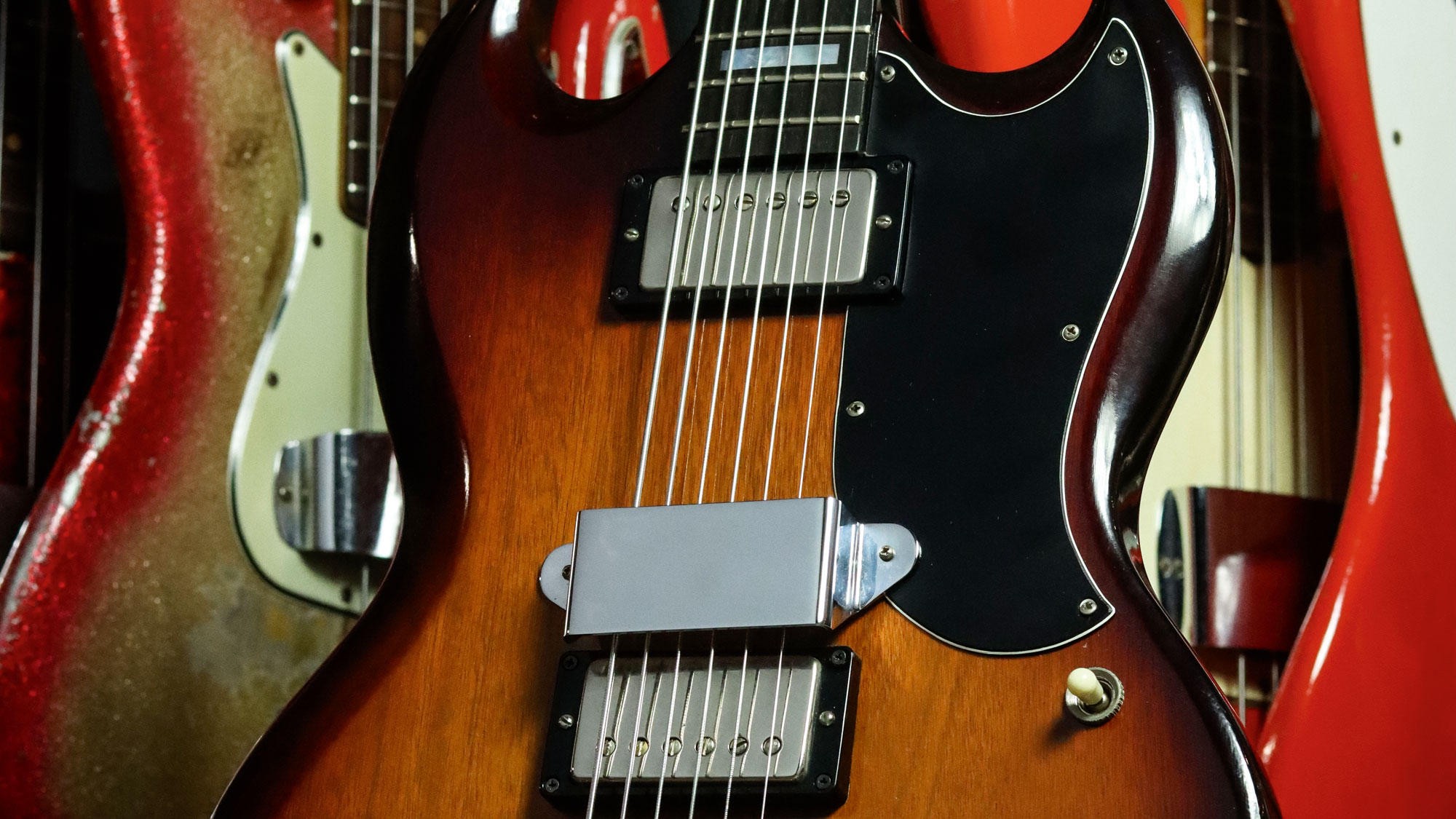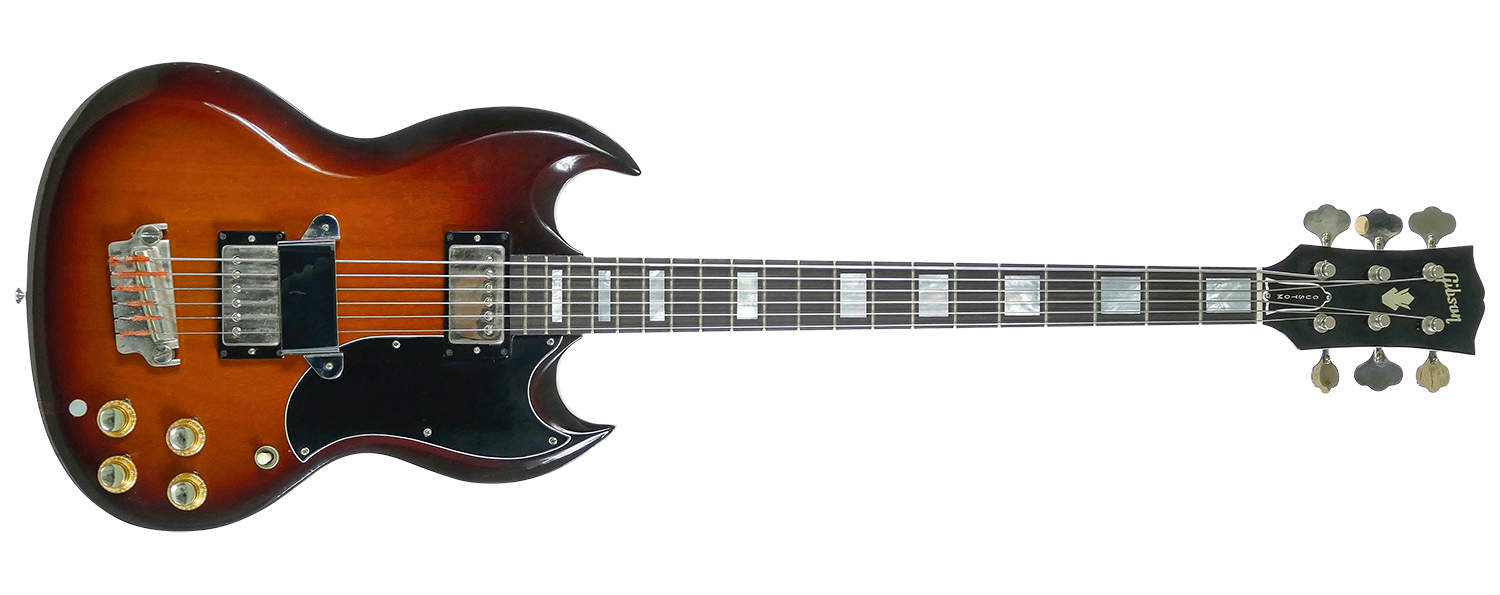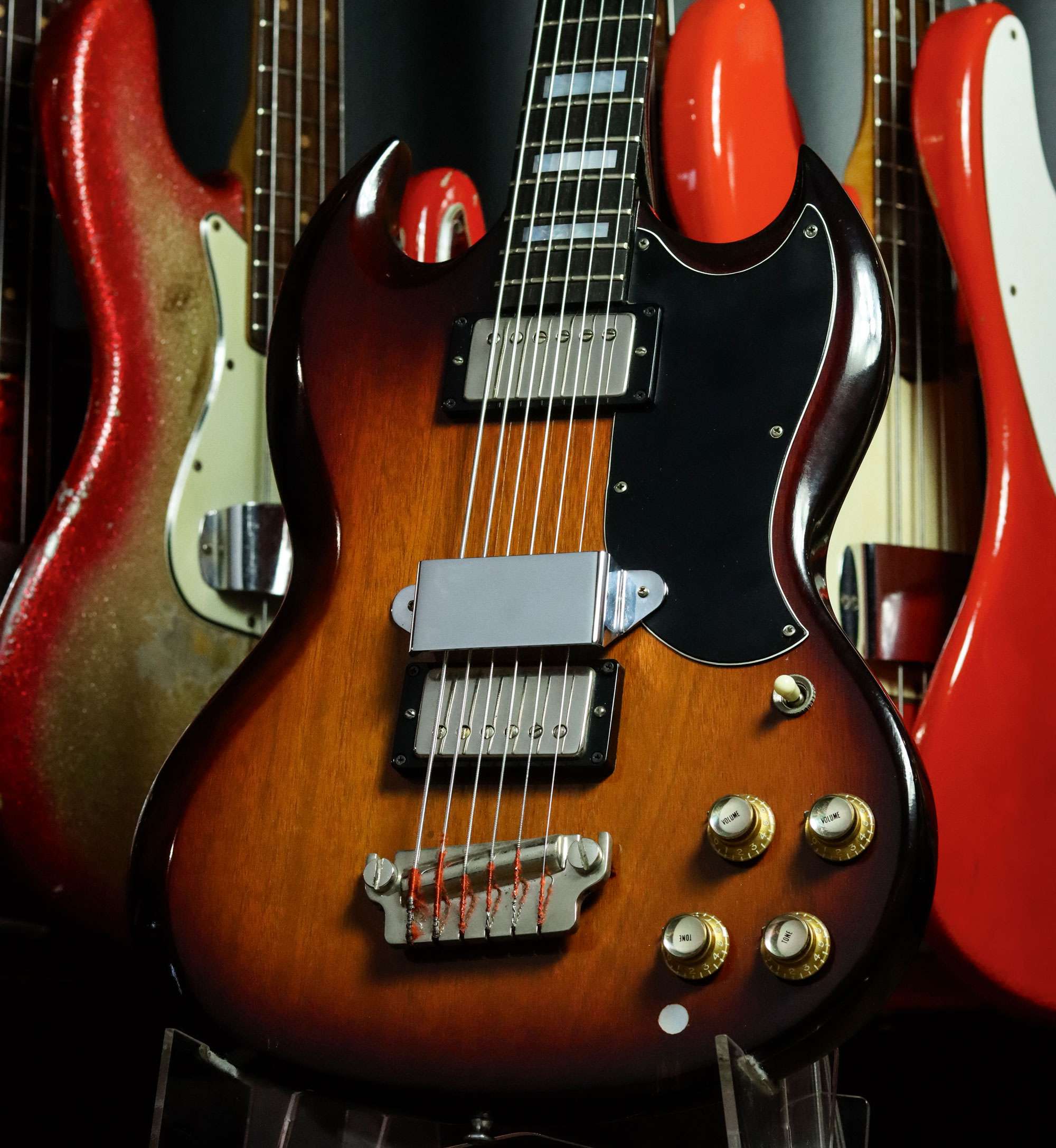
“Several features make this example unique. Firstly, there’s the colour, because I’ve never seen a sunburst one before. It’s like a two-tone tobacco sunburst; I’ve had a Les Paul SG that was the same colour. It had to be custom-ordered and that’s why there’s a ‘custom’ engraving on the truss rod cover.
“Then there’s the ebony fingerboard with genuine mother-of-pearl block markers. Every other EB-6D I’ve seen had a rosewood fingerboard with ‘mother of toilet seat’ celluloid dot markers, but this is more like a Les Paul Custom board, minus the binding.
“There’s a pearl plug where the jack socket would normally be. The original owner, who must have ordered this specially, requested that the jack socket be mounted on the control coverplate. They must have done this to prevent the wood from tearing out in the event of someone hitting or standing on the plug.
“Gibson intended players to use right-angled jack plugs with front-mounted sockets, but most didn’t and damage in this area is fairly common. I assume the thinking was that the plug would simply pull out from the back if anything happened. And if the plastic plate got damaged, the owner could easily order a replacement. In order to accommodate the socket, Gibson had to customise the control cavity rout, but there are no other structural differences.

“Both pickups are ‘Patent Number’ humbuckers identical to the ones Gibson was fitting to regular six-string guitars. Being a 1965 model, the hardware is a bit of a mixture, with nickel-plated pickup covers and a chrome-plated coverplate. The bridge is the same as the one Gibson used for the four-string basses, but they cut six rather than four slots and made six little string-grooves on the saddle.
“EB-6s sell quickly and are usually gone straight after I put them on the website. I’m surprised at the number of people who want them because I don’t think they sound as good as a Fender VI and they’re not as versatile. I think the EB-6 can sound a little mushy with the humbuckers, although these pickups have a lot more clarity and tonal range than the earlier ‘mudbucker’ pickups that Gibson fitted to the EB-0.
“This one comes with its original hardshell black Tolex case. EB-6D cases had to be longer because the headstock is enormous; it’s almost like Gibson’s 12-string headstock but a little wider. The neck is full, but it’s not a giant like the late-50s ones or thin like an early 60s neck. It most closely resembles the type of neck you’d find on a ’63 or ’64 ES-335.
“It’s a little bit wider at the nut and it gets deeper as you move towards the body, but the shoulders and general feel are pretty similar. I’d describe it as a very robust ‘C’ neck. The frets are pretty big and wide, but they’re not gigantic by any means, and you can play chords and bend notes quite easily.
“In 1959, Gibson made the first EB-6 and it was like the ES-335 with a semi-hollow double-cutaway body and a centre block. It had one big humbucker pickup with a black plastic cover that was eventually changed to a nickel cover. The transition to the solid body version happened around the same time the doublenecks acquired solid bodies in 1961.”
“They actually made some of those with a regular guitar neck and an EB-6 neck. There are several photos showing Elvis playing his and it’s currently on display at Graceland.
“The EBSF-1250 had a built-in fuzz tone circuit, but that was removed around 1965 and the model name was simplified to EBS-1250. Around 30 were made before it was discontinued in 1970. They do come up for sale every once in a while, and I always attempt to buy every one I can get.
“The EB-6D only lasted until 1966 and the six-string bass was a phase that all the manufacturers went through. It was never a big seller. This one is near mint and if 10 is the best, I’d rate it as a solid 9.75.
“It doesn’t look as if it was ever used much, but it plays very well and the flat-wound stings look so old they may even be the original factory set. Round-wound strings would add brightness, but I think this is the perfect instrument for flats and I’m leaving them on for the next owner to decide.”








